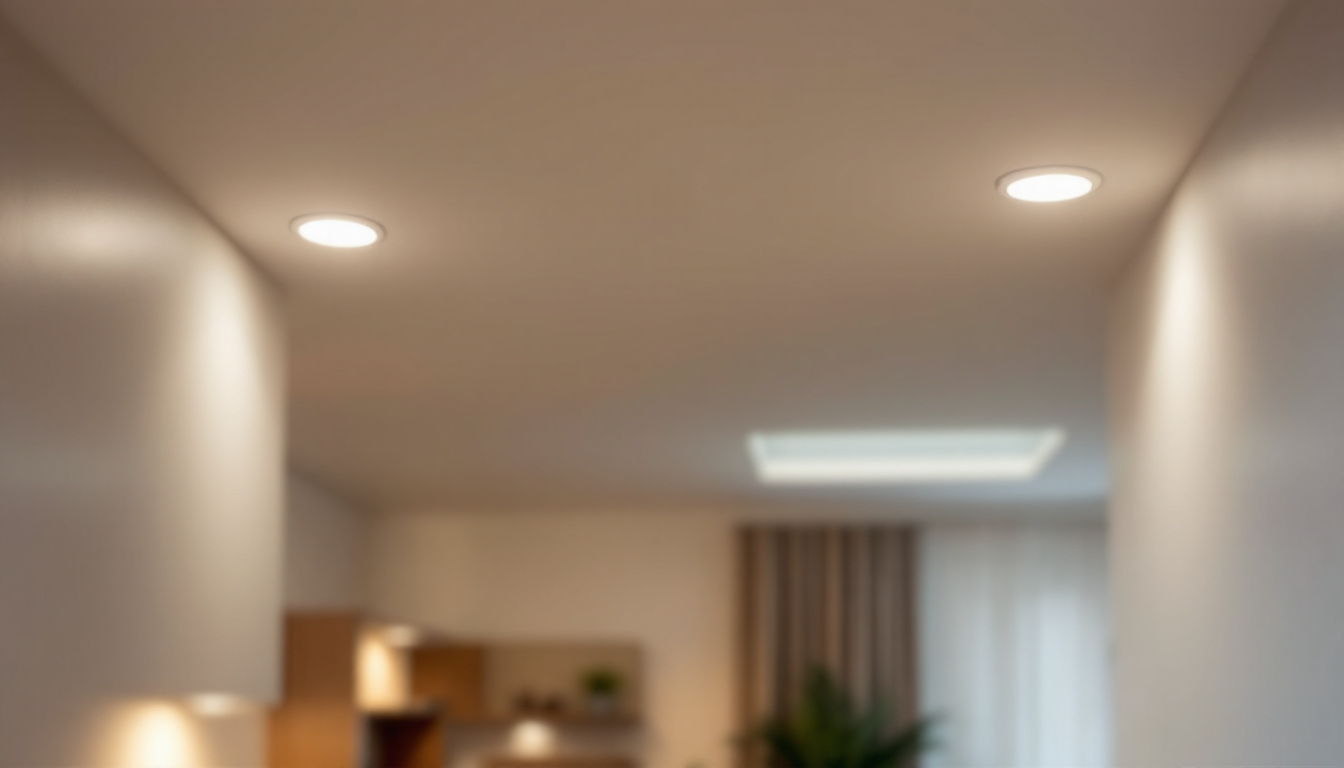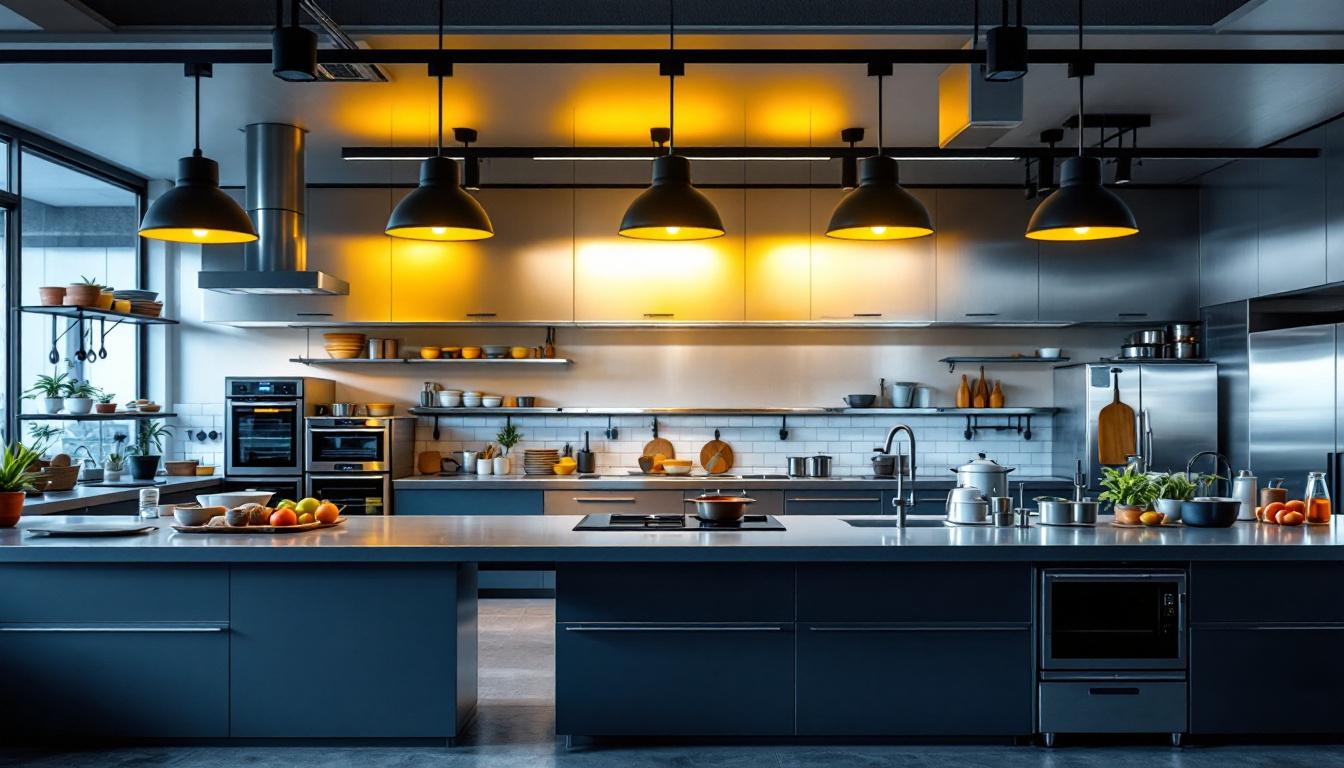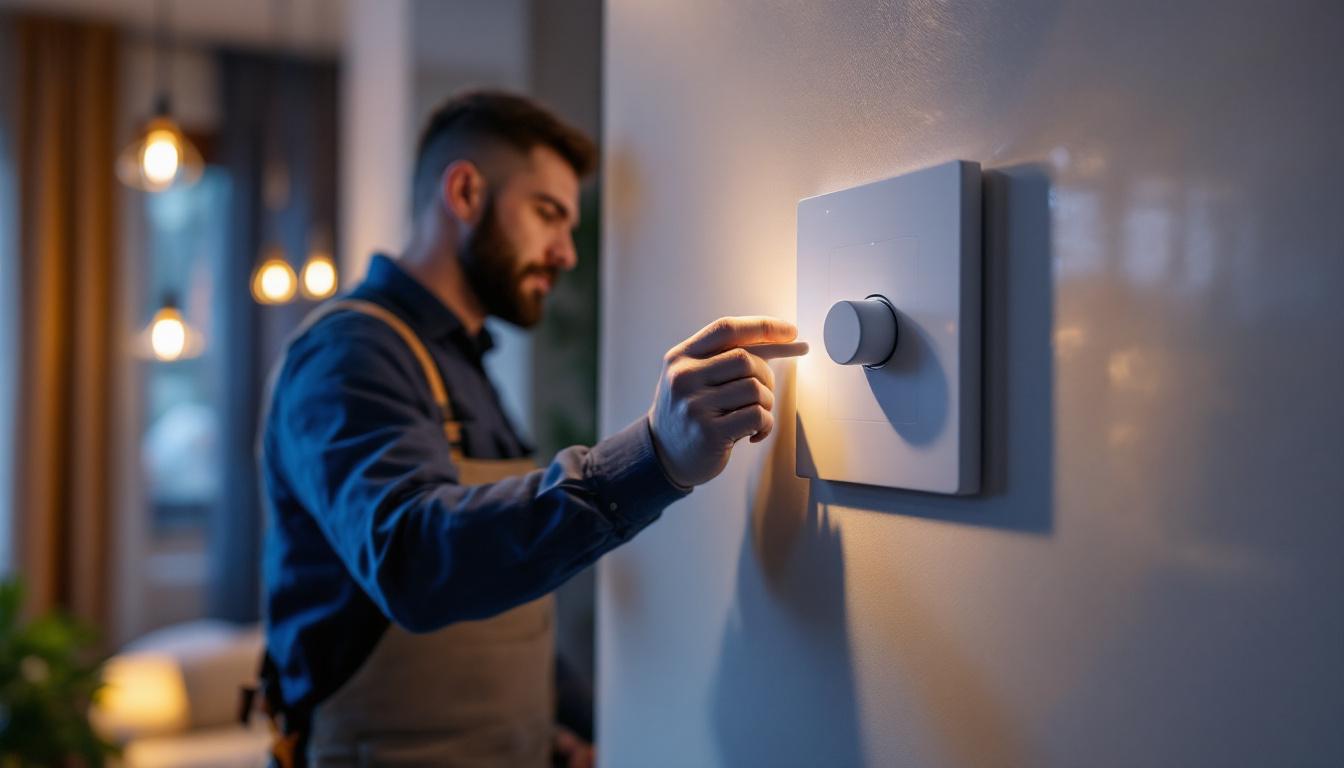
Lighting contractors play a crucial role in the design and installation of light fixtures, particularly ceiling-mounted options that enhance both functionality and aesthetics in various spaces. This guide aims to provide comprehensive insights into the different types of ceiling light fixtures, their applications, installation considerations, and trends that are shaping the industry. Whether working on residential or commercial projects, understanding these elements can elevate a contractor’s expertise and service offerings.
Ceiling light fixtures come in a myriad of styles and functionalities. From ambient lighting that sets the mood to task lighting that aids in specific activities, selecting the right fixture is essential for achieving the desired effect. Here are some of the most common types of ceiling light fixtures:
flush mount fixtures are mounted directly against the ceiling, making them an ideal choice for spaces with low ceilings. They provide a clean and unobtrusive look while delivering ample light. These fixtures are often used in hallways, bedrooms, and kitchens, where a streamlined appearance is desirable.
When selecting flush mount fixtures, consider the size and style that will complement the room’s decor. Additionally, energy-efficient LED options are increasingly popular, offering longevity and reduced energy costs. Many flush mount designs also incorporate decorative elements such as frosted glass or intricate metalwork, allowing them to blend seamlessly with various interior design themes, from modern to traditional.
Semi-flush mount fixtures hang slightly below the ceiling, providing a more decorative element while still being suitable for lower ceilings. They can serve as a focal point in a room, combining functionality with style. These fixtures are commonly found in dining areas, entryways, and living rooms.
When choosing semi-flush mount fixtures, it’s important to consider the height of the ceiling and the overall design theme of the space. The right fixture can enhance the ambiance while ensuring adequate illumination. Additionally, semi-flush mounts often come in a variety of materials, including metal, glass, and fabric, allowing for a wide range of finishes that can either contrast or complement existing decor. Their versatility makes them a favorite among homeowners looking to add a touch of elegance without overwhelming the space.
Pendant lights are versatile fixtures that hang from the ceiling, often used in clusters or as standalone pieces. They are particularly popular over kitchen islands, dining tables, and bars. The design options are vast, ranging from minimalist to elaborate, allowing for personalization based on the client’s taste.
When installing pendant lights, pay attention to the height at which they hang. Ideally, they should be positioned to provide adequate light without obstructing views or creating a hazard. Furthermore, pendant lights can also serve as artistic statements, with many designers creating unique shapes and colors that can transform a simple space into a visual masterpiece. For instance, glass pendants can diffuse light beautifully, creating a warm glow, while metal fixtures can add an industrial edge. Mixing different styles and heights can create an eye-catching arrangement that not only illuminates but also enhances the overall aesthetic of the room.
Proper installation is critical for the functionality and safety of light fixtures. Lighting contractors must consider various factors to ensure a successful installation. Here are some key considerations:
Before installing any ceiling light fixture, it is essential to assess the existing electrical wiring. Ensure that the wiring is up to code and capable of supporting the new fixture. This may involve upgrading the circuit or installing additional wiring to accommodate the load.
Safety should always be the top priority. Use appropriate tools and follow safety protocols to prevent electrical hazards. If unsure about the wiring, consulting with a licensed electrician can provide peace of mind.
Different fixtures have varying weights, and it is crucial to ensure that the ceiling structure can support the chosen fixture. For heavier options, additional support may be required, such as a ceiling brace or mounting box designed for heavier loads.
Always check the manufacturer’s specifications regarding weight limits and installation requirements. This ensures that the fixture remains securely mounted and reduces the risk of accidents.
The placement of ceiling fixtures significantly impacts the overall lighting effect in a room. Consider the layout of the space and the function of each area when determining fixture placement. For instance, in a kitchen, task lighting should be focused over work areas, while ambient lighting can be more evenly distributed throughout the space.
Spacing between fixtures is also important. In larger rooms, multiple fixtures may be necessary to achieve adequate illumination. A general rule of thumb is to space fixtures about 4 to 6 feet apart, but this may vary based on the fixture type and room size.
The lighting industry is continually evolving, with new trends emerging that reflect changing design preferences and technological advancements. Staying updated on these trends can help lighting contractors provide innovative solutions to their clients. Here are some notable trends:
Smart lighting technology is gaining popularity, allowing users to control their lighting through mobile apps or voice commands. This trend is not only convenient but also energy-efficient, as users can adjust lighting based on their needs and preferences.
Incorporating smart fixtures into installations can enhance the overall appeal of a project. Lighting contractors should familiarize themselves with various smart lighting systems and their compatibility with different fixtures.
As sustainability becomes a priority for many homeowners and businesses, energy-efficient lighting solutions are in high demand. LED fixtures are at the forefront of this trend, offering long lifespans and reduced energy consumption compared to traditional incandescent bulbs.
Contractors should emphasize the benefits of energy-efficient options to clients, highlighting potential cost savings and environmental impact. Providing a range of sustainable choices can set a contractor apart in a competitive market.
Ceiling light fixtures are increasingly being viewed as art pieces rather than just functional items. Designers are experimenting with unique shapes, materials, and colors to create eye-catching fixtures that serve as focal points in a room.
Encouraging clients to explore artistic lighting options can lead to more personalized and impactful designs. Contractors should stay informed about emerging designers and collections to offer the latest trends in artistic lighting.
Different rooms have unique lighting needs, and selecting the appropriate ceiling light fixture can enhance both functionality and aesthetics. Here’s a breakdown of considerations for various spaces:
In living rooms, a combination of ambient and task lighting is essential. Ceiling fixtures should provide general illumination while also allowing for accent lighting to highlight artwork or architectural features. Options such as chandeliers or semi-flush mount fixtures can create a welcoming atmosphere.
Consider the room’s size and layout when selecting fixtures. Larger spaces may benefit from multiple fixtures or a statement piece that draws the eye, while smaller rooms may require more compact options.
Kitchens require bright, functional lighting for cooking and food preparation. Pendant lights over islands and task lighting under cabinets are popular choices. Ceiling-mounted fixtures should provide ample light without creating harsh shadows.
Choosing fixtures that are easy to clean and maintain is also important in a kitchen environment. Materials that resist grease and moisture will ensure longevity and ease of upkeep.
In bedrooms, the lighting should promote relaxation and comfort. Soft, ambient lighting is ideal, with options such as flush mount fixtures or dimmable pendant lights. Layering lighting with bedside lamps can also enhance the overall effect.
Consideration of the fixture’s style is crucial in bedrooms, as it should align with the overall decor and create a calming atmosphere. Warm-toned bulbs can further enhance the inviting feel of the space.
Proper maintenance of ceiling light fixtures is essential for ensuring their longevity and optimal performance. Lighting contractors should advise clients on care practices to keep their fixtures looking and functioning at their best.
Dust and grime can accumulate on light fixtures, diminishing their brightness and appeal. Regular cleaning is necessary to maintain their appearance. For most fixtures, a simple wipe with a soft, damp cloth will suffice. However, more intricate designs may require gentle cleaning methods to avoid damage.
Contractors should recommend cleaning schedules based on the fixture type and location. For example, fixtures in kitchens may require more frequent cleaning due to grease buildup.
Over time, light bulbs will need to be replaced to maintain optimal lighting levels. Contractors should educate clients on the types of bulbs compatible with their fixtures and the importance of using the correct wattage. Using bulbs with a higher wattage than recommended can lead to overheating and potential hazards.
Encouraging clients to switch to energy-efficient bulbs can also be beneficial, as they last longer and consume less energy, resulting in cost savings over time.
Regular inspections of ceiling fixtures can help identify any issues before they become significant problems. Checking for loose connections, flickering lights, or signs of wear can prevent safety hazards and ensure continued functionality.
Contractors can offer maintenance services or provide clients with a checklist for periodic inspections, reinforcing the importance of proactive care.
Ceiling light fixtures are an integral part of any lighting design, and understanding their various types, installation considerations, trends, and maintenance practices is essential for lighting contractors. By staying informed and adapting to the evolving needs of clients, contractors can enhance their service offerings and ensure successful project outcomes.
Ultimately, the right ceiling light fixture can transform a space, providing not just illumination but also a sense of style and comfort. By mastering the intricacies of ceiling lighting, contractors can position themselves as trusted experts in the field, ready to meet the diverse needs of their clients.
Ready to elevate your lighting projects with the finest selection of ceiling light fixtures? Look no further than LumenWholesale, where we offer an extensive range of high-quality, spec-grade lighting products at unbeatable wholesale prices. Say goodbye to local distributor markups and hello to premium lighting that meets the highest industry standards. With free shipping on bulk orders, you can trust that you’re getting the best value without any hidden fees. Transform your spaces with reliable, high-performance lighting and enjoy the convenience of shopping with us. Discover the perfect blend of quality, affordability, and convenience today by visiting Wholesale Lighting at the Best Value.

Discover the essentials of 4-inch recessed LED lighting in just five minutes.

Explore the advantages and challenges of industrial kitchen lighting for contractors.

Discover how dimmer lights are revolutionizing the lighting industry and providing a competitive edge for contractors.

Discover the essential facts about hanging lantern lights that every lighting contractor should know.